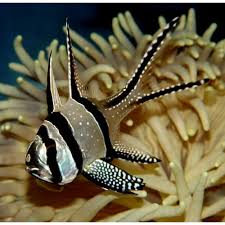The Dragon in Chinese Festivals Honoring Harvest and Abundance

The dragon is one of the most iconic symbols in Chinese culture, representing power, strength, and auspiciousness. Throughout Chinese history, the dragon has been deeply associated with many aspects of life, from governance and social hierarchy to spirituality and folklore. Among its many roles, the dragon has also played an important part in the Chinese festivals celebrating harvests and abundance. In these festivals, the dragon is more than just a symbol of good fortune; it is seen as a divine being that can ensure a bountiful harvest, protect the crops, and bring prosperity to the land.
This article explores the significant role of the dragon in Chinese festivals dedicated to honoring the harvest and ensuring agricultural prosperity. By examining the festivals, rituals, and symbolism surrounding the dragon, we can gain a deeper understanding of the cultural importance of this majestic creature in the agricultural traditions of China.
The Dragon and Its Connection to Agriculture
In traditional Chinese culture, agriculture has always been seen as a vital part of life. The land, the crops, and the seasonal cycles were revered as crucial elements that sustained communities and ensured the survival of the people. For this reason, many agricultural rituals and festivals were created to honor the spirits of nature and to seek blessings for good harvests. Among the various deities and spirits worshiped during these times, the dragon stood out as the most powerful and significant symbol.
In Chinese cosmology, the dragon is closely associated with the water element, believed to have control over rainfall and rivers. Since water is essential for crop growth, the dragon was seen as a guardian of agricultural abundance. The belief that the dragon could bring rain to nourish the land made it an essential figure in the rituals and festivals celebrating the harvest. These festivals were not only a time to celebrate the fruits of labor but also an opportunity to invoke the dragon’s blessings for the continued prosperity of the land.
The Dragon Dance: A Celebration of Abundance
One of the most famous and visually stunning representations of the dragon in Chinese culture is the Dragon Dance. This traditional performance, often featured in festivals across China, involves a team of dancers who manipulate a long, colorful dragon figure made of cloth and bamboo. The dragon is typically supported by several performers who skillfully move it through the streets, mimicking the serpent-like movements of a real dragon.
The Dragon Dance is commonly performed during festivals like Chinese New Year, the Lantern Festival, and the Dragon Boat Festival, all of which are connected to themes of prosperity, harvest, and abundance. The dance is meant to bring good fortune, chase away evil spirits, and celebrate the beginning of a new agricultural cycle. During the performance, the dragon is often seen as a powerful and divine creature, embodying the hopes and desires of the people for a fruitful harvest.
In many cases, the Dragon Dance is also accompanied by firecrackers and loud music, adding to the festive atmosphere. The sound of the firecrackers is believed to drive away any negative energy or bad spirits that could harm the crops. The lively and energetic performance of the Dragon Dance serves as both a form of entertainment and a spiritual ritual, ensuring that the land remains fertile and that the harvest will be abundant.
The Dragon Boat Festival: A Celebration of Water and Agriculture
Another key festival where the dragon plays an important role is the Dragon Boat Festival (端午节), which takes place on the 5th day of the 5th month of the lunar calendar. This festival is celebrated with dragon boat races, where teams of rowers compete in long, narrow boats designed to resemble dragons. The festival honors the life and death of the ancient poet and statesman Qu Yuan, who is said to have drowned in a river after attempting to protect his country from political corruption.
The Dragon Boat Festival has strong connections to agriculture, especially in relation to the harvest. The festival takes place during the early summer, which is an important time for rice cultivation in southern China. Traditionally, people would pray for good weather and a bountiful harvest during this time. The dragon boats themselves are a symbol of the water element, with the dragon head at the front of the boat symbolizing strength, power, and protection. The races represent a way of honoring the dragon as a water deity and invoking its blessings for abundant crops.
In addition to the dragon boat races, the festival is also marked by the making and eating of zongzi (粽子), a type of sticky rice dumpling wrapped in bamboo leaves. This food is considered a sacred offering to the river spirits, including the dragon, as a way of ensuring good fortune and a successful harvest. The dragon’s association with water and the harvest is reinforced through these ritualistic practices, symbolizing the deep bond between the land, water, and agriculture.
The Role of the Dragon in Harvest Rituals
Throughout Chinese history, various harvest festivals and agricultural rituals have been held to honor the gods, spirits, and deities that were believed to have power over the land’s fertility. In many of these rituals, the dragon played a central role as a divine being that could protect crops and ensure a successful harvest.
For example, in ancient times, during the Spring Plowing Festival (耕种节), emperors would perform elaborate rituals to honor the earth and request blessings for a bountiful crop. During these ceremonies, the dragon was often invoked to symbolize the power of the heavens and the water element, ensuring that rain would fall at the right time to nourish the crops. The dragon’s presence in these rituals reflected the belief that agriculture was not just a human endeavor, but a divine process, where the forces of nature had to be appeased and respected in order for the land to provide for the people.
The importance of the dragon in these ceremonies can also be seen in the Dragon Gate legends, which are closely tied to the themes of growth, prosperity, and abundance. According to the legend, carp that could swim up the Dragon Gate waterfall would transform into dragons, symbolizing the idea of transformation and ascension to a higher state. This story highlights the dragon’s association with overcoming challenges and achieving greatness, a metaphor that was often applied to the growth and maturation of crops and the prosperity of the people.
The Dragon and the Symbolism of Good Fortune
In Chinese culture, the dragon is an ancient symbol of good fortune, power, and protection. Its presence in agricultural festivals symbolizes the hope for prosperity and abundance. By honoring the dragon, the Chinese people believed they could ensure a good harvest, protect the crops from pests and bad weather, and ultimately achieve prosperity for their families and communities.
The dragon’s connection to good fortune is reflected in its appearance during the festivals. Its vibrant, colorful body represents the vitality and energy needed for a successful harvest. The dragon’s movements in the Dragon Dance, swift and graceful, are a reminder of the need for balance between strength and harmony in the natural world. The dragon’s blessing is believed to bring balance to the environment, ensuring that all elements—earth, water, and air—work in harmony to support the growth of crops.
In addition to its physical representations, the dragon is often featured in Chinese art, textiles, and decorations used during harvest festivals. These depictions of the dragon serve as talismans, invoking the creature’s protective power over the harvest and ensuring that the community will experience a year of abundance.
Conclusion: The Dragon as a Guardian of the Harvest
The dragon’s role in Chinese festivals honoring harvest and abundance is a testament to its deep cultural significance in Chinese society. As a symbol of power, protection, and prosperity, the dragon serves as a guardian of the land and its people, ensuring that the crops grow, that the rains come, and that the harvest is bountiful. Through festivals like the Dragon Boat Festival, the Dragon Dance, and various harvest rituals, the Chinese people honor the dragon as a divine being whose blessings bring success, vitality, and abundance to their lives.
The dragon, as a protector of agriculture, represents the interconnection between nature, spirituality, and culture in Chinese society. Its role in these festivals is not just symbolic but also a reminder of the importance of harmony with the natural world. By invoking the dragon’s blessings, the people of China continue to celebrate the cycles of nature and the hope for a prosperous future. Through these age-old traditions, the dragon remains a timeless symbol of resilience, strength, and the eternal connection between humans and the earth.


